Picture Courtesy: http://www.ladakhdevelopmentfoundation.com/ladakh.asp
For breakfast, Ringchen served Khambir, the traditional bread of Ladakh and locally produced apricot jam along with honey, cheese spread and tea. The morning rays seemed to make peace with the frigid hours of the night. Having worked as a tourist guide before, Dorjee was the most resourceful host we could have asked for. He gave us a map of the region, providing an overview of the places to visit and how to get there. Shey Palace, Thikse Monastery, Hemis Monastery, Stok Palace and Spituk Monastery were on our list. When we were about to leave, Azal noticed that the front tires of the Thar were balding out towards the edges. A visit to the service station was in order. On the way to Shey Palace, we dropped in at the Mahindra Service Center in Leh. Since it was a good three to four hour job, we decided to come back in the evening before the garage closed. Going ahead in search of Shey Palace, we came across a magnificent Buddhist institution of which we hadn't heard before - Karma Dupgyud Choeling Monastery. We decided to take a peek inside.
Like all Buddhist gompas, this one too exuded an abiding tranquility. In a peaceful corner, a devotee was engrossed in worship. He chanted a mantra in a subdued voice as he circumambulated the giant prayer wheel, rotating it in clockwise direction. Monks clad in plain maroon robes, went about performing their daily chores. The temple and assembly hall were adorned with colorful motifs peculiar to Tibetan temple architecture.
We moved on. Any direction we turned to, we could see the mighty mountains calling out to us. They looked like layers of paint - blues and violets and browns, dabbed carelessly one on top of the other to create a palette that is naturally evolving. It was as if the artist intended to let his art take a life of its own, allowing the infinite hues to express themselves only as much as they wished to - to produce a masterpiece that is not only original but also true in its deepest vein. Every rock and every cloud breathed a precarious impermanence - a transient beauty that can be lost any moment, an erratic tendency towards self-destruction. Maybe, this is an illustration of wabi-sabi - the Japanese philosophy of aesthetics which celebrates the beauty of imperfection.
15 km south of Leh in the upper Indus valley, on a course hillock, stood the historic Shey Palace. Shey used to be the summer capital of Ladakh in its heyday. Built in 1655 by Deldan Namgyal, the king of Ladakh, the palace was used as a summer retreat by the royalty. When the Namgyals were attacked by the Dogras of Jammu in 1842, they fled to Stok, where the new palace is situated. The gompa at Shey houses a giant statue of Buddha made from copper and gold. The interiors of the temple feature elaborate wall paintings depicting scenes from Buddhist mythology. Outside the palace, we bought a carved, antique teapot made of brass from a street vendor. We also got a couple of prayer flags - strings of colorful rectangular cloth with Buddhist mantras printed on them. They are hung up in windy areas so that the blessings would blow with the wind into the surrounding space, spreading peace, compassion and wisdom to all. The prayer flag comes in five colors arranged from left to right in the following order - blue (sky), white (air), red (fire), green (water) and yellow (earth). The balance of these elements is believed to bring health and harmony.
Thikse Monastery came next. The golden spires of the stupas located outside the entrance seemed to pierce the cottony clouds floating above. The second largest gompa in Ladakh, Thikse houses relics from the golden age of Buddhism ranging from statuettes and paintings to swords and stupas. The Maitreya Buddha statue located inside the twelve-storeyed building is the largest such statue in Ladakh. Besides other ornamental shrines like the one dedicated to Goddess Tara, Thikse has a nunnery and individual huts for the lamas. The monastery offers charismatic views of the Indus valley from its courtyard. We bought a calendar featuring the most visited tourist spots across Ladakh, from the souvenir shop beside the recreation center. It was past noon when we headed towards Hemis monastery. En route we stopped at Spituk. The rattling river bridge going up to the gompa was graced with countless strings of prayer flags, whispering good luck charms to the incessant mountain breeze.
Nearing Hemis, we felt we were being transported to an infinite expanse of parched land, encompassed by undulating peaks melting into the blurry background. It was frosty one moment and blazing the next. The monastery was closed for lunch when we got there. So we helped ourselves with some thukpa and fried rice from the visitors' canteen. The courtyard was massive with tall flagpoles marking its corners and the red beams of the double-storied quarters touching the intricate carvings of its roof. Tourists flock to this monastery to attend the annual festival during which the lamas perform a masked dance. The banner for Naropa 2016 was up already - the Kumbh Mela of the Himalayas hosted by the Hemis monastery once in every 12 years to honour the 11th century Buddhist scholar-saint Naropa.
The last one on our list was Stok palace. To get to the service center in time, we would have had to skip Stok. Since it was on the way back, I suggested that we do a flying visit. But I changed my mind seeing the long flight of stairs leading up to the palace. It would take more than thirty minutes to go and come back and we didn't have the time. Since we had come all the way, Azal felt it didn't make sense to not enter the palace. We got into a bitter argument at the end of which, he went ahead and I waited near the jeep, cooling my nerves with a stroll down the village. From Stok, we went straight to the service center which was closed, just as we feared. The fight continued. So when I visited the Shanti Stupa, Azal refused to come with me.
The Shanti Stupa is a strikingly beautiful white-domed structure which holds the relics of the Buddha at its base. At the end of the day, it was clear that the tires were in bad shape and there was no way we could continue the trip without getting the problem sorted in Leh. We would be in the interiors of Ladakh for the next few days, totally cut off from the rest of the world. Forget about service centers, there is not even a fuel station after Leh. And.. there's no mobile network. Now that's like saying all your lifelines would be exhausted! Dorjee came to the rescue. He's definitely your man in Ladakh! One of his friends runs a workshop and there was still some hope. Azal and Dorjee went looking for the mechanic while I spent the evening with Ringchen, discussing everything from dogs to marriage.
The Shanti Stupa is a strikingly beautiful white-domed structure which holds the relics of the Buddha at its base. At the end of the day, it was clear that the tires were in bad shape and there was no way we could continue the trip without getting the problem sorted in Leh. We would be in the interiors of Ladakh for the next few days, totally cut off from the rest of the world. Forget about service centers, there is not even a fuel station after Leh. And.. there's no mobile network. Now that's like saying all your lifelines would be exhausted! Dorjee came to the rescue. He's definitely your man in Ladakh! One of his friends runs a workshop and there was still some hope. Azal and Dorjee went looking for the mechanic while I spent the evening with Ringchen, discussing everything from dogs to marriage.
Azal returned with bad news. The workshop was closed too. But they agreed to look at the Thar first thing in the morning. Our initial plan for the next 3 days looked like this:
Leh - Diskit - Hunder - Turtuk - Diskit
Diskit - Wari La - Tangste
Tangste - Pangong Tso - Leh
Dorjee and HVK assured us that we could still make it to Diskit if we started from Leh by noon. Azal took off to the workshop in the morning. I found my way to Leh market with a little help from my host who worked as a teacher. She offered to drop me to the market on her way to school. Such a winsome lady! Elegance reflected in all her mannerisms. I'm sure the kids love her. The school bus picked us up at quarter to nine. I was amused to see Ringchen greeting so many people on the road as the bus lugged forward. It was a small world where everyone knew each other. Unlike the rest of India, I felt absolutely safe in Ladakh, especially as a woman. Smiles all around. Happy faces. Probably because they are a people who have realized that no contender can stand up to the retributive wrath of mother nature.
Fresh and dry fruits, vegetables, traditional porcelain ware, woolen clothes and metallic jewelery were displayed on either side of the road. A mosque and prayer wheel existed side by side. The Leh Palace stood atop a rocky mound in the center of all activity. I walked back to the guest house by noon, carrying a shopping bag stuffed with eclectic goodies - a packet of walnuts, a bottle of apricot jam, an exclusive Ladakh flask and a shawl made from real yak wool. On the way, I got my cloth bag mended by a cobbler. He played old Hindi classics on his quaint little radio. I watched him work the stitches as the music played on. Having walked a good distance, I was panting when I found Azal turning around the corner of the road. The Thar was fixed and we were ready to go.
It was an important day for us. To reach Diskit, we had to traverse the world's highest motorable pass - Khardung La. Though there is disagreement on this claim, the BRO sign at the pass insists it is. Khardung La - 5602 m (18,379 ft) - World's Highest Motorable Road. This summit sign is almost like a finish line for the adventure-seeker. Imagine posing for a picture after you've climbed one of the toughest mountain trails in the world, with a sign that corroborates the spunk and chutzpah of a true explorer! Well, we were headed in that direction. At the entry and exit check points namely South Pullu and North Pullu, we had to fill up self declaration forms. We were told that the officials compare these forms to ensure nobody goes missing on the pass. Khardung La was similar to the other passes in character, but it was several times steeper. From up above, the winding roads looked almost like a child's scribble on the canvas of a mountain. Possibly a doodle depicting concentric eggs. Life was indeed as trivial as that when we were up there. And just as precious as the child drawing it. The ravening gorges were on one side and the portentous slivers of a mountain, on the other. Sometimes when the path turned, it resembled a swing suspended mid-air. All that we saw was a cloudy sky hanging above two stumps of rock and we drove into the space between them, not knowing what lay ahead. There was no road, just loose rock, gravel and hardened ice. When we got to the top, we found others who shared our path - some cheering, others capturing the moment on camera. As soon as Azal hit the brakes, Sammy sprang up. She was no flat-nosed wuss gasping for air! On the contrary, Sammy etched her name in the hall of fame as the first pug (in all likelihood) to travel to the roof of the world! A group of bikers wanted to click pictures with her and she willingly obliged. Our Sammy, the Star! Azal and I were thrilled too! We had done it..Finally!!
The path ahead was smothered in hardened snow. Azal got out to click a picture of the Thar against the iced background. As Sammy and I posed, Azal lost his balance, slipping and falling on all fours. I couldn't help but laugh as he got himself together with a sheepish smile that stretched from end to end. It got better from there but time was against us. At one instant, we got on the wrong arm of a forked path. A little down the road, instinct told us something wasn't right. We could not ask for directions because there was nobody in the vicinity. No network on the phone either. We retreated a few metres and got back on the right track. The village of Khalsar had been completely washed out in the floods that occurred the previous month. Well, what we saw confirmed we were in the right direction. Sometimes that's what you ought to do in life too - Pause. Feel the pulse of the moment. Listen to your heart. Go back a little if need be. Find your path. And just keep going!
Nubra valley was bathed in moonlight when we entered Diskit, the capital of Nubra. Formed by the meeting of Shyok river and Nubra river, the valley is a motley of elusive screes, clear blue waters and scattered greenery set in the embrace of silver grey sierra. But in the sea of darkness mollified by a balmy lustre, the valley resembled a hologram of an ocean, unsettled yet still. We reached Hotel Olthang a little after eight. Completely drained. In situations like these, a singular problem arose - who would take Sammy out? Eventually, I did. Somebody looked at Sammy and exclaimed, "Men in Black!" Another went, "Dekho, Vodafone doggie!"
As per the original plan, we should have covered Hunder and Turtuk that day. Hunder is where you get to see the double humped or bactrian camels, only found in certain parts of Central Asia. Turtuk is a scenic village on the Pakistan border inhabited by the Balti tribe. It was time to choose because we could not cover it all. We had a deadline to meet, that is to reach Bombay by the 24th of the month. And it was the 16th already. We decided to go to Hunder the next morning and proceed to Tangste from there. Only about 12 km from Diskit, Hunder was every bit as enthralling as Nubra. Yaks and camels dotted the terrain. We took turns riding the bactrian camel, as one of us had to babysit Sammy. The majestic creatures induced so much fear and amazement in her that she started barking at them. She calmed down when she realized they were harmless.
A good story almost always has an unforeseen twist, a juncture where it takes on a new dimension. Our travel imbibed new vigor in Hunder when we made friends with an Army Colonel posted in Tangste. Sammy was the reason behind it. Amused seeing a pug entertaining herself in an arid desert valley where even humans were scarce, the Colonel became interested in our whereabouts. He and his wife were traveling in an innova taxi driven by a local who used to serve in the Army. His daughter, an avid biker with a record for covering the distance from Kanyakumari to Leh in the shortest time, was trailing behind on a bike. The Colonel invited us to stay at his camp in Tangste.
There is more than one way to get to Tangste. We were planning on taking the one via Wari La pass, the route that's usually recommended. The other one, regarded as highly unpredictable and rather difficult, was through the Shyok river bed. It is accessible only when the river goes dry. The Colonel's driver suggested we take that route and there wasn't much to worry. We only had to follow his vehicle. When we checked with HVK, he said that we could go ahead if were traveling in a convoy. And so we decided to take the road less traveled. O Wait! There was no road, just a bed of sand and pebbles on either side of a river that had reduced to a dribble. The challenge was real given that Azal wasn't an experienced driver. He had started driving just a few months prior to our trip. But the ex-Army driver philosophized with Azal, quoting his own maxim, "Tension lene ka nahi..dene ka hai!" (Quite literally, 'don't take tension, only give tension'). In a friend's words, it was baptism by fire!
We left Tangste in the morning. En route Lukung, we spotted the exotic Himalayan marmots playing hide and seek in the valley. Breakfast was arranged at the military hut adjoining Pangong Tso, the mystical high-altitude lake which came into limelight after it was featured in the movie 3 Idiots. The fathomless expanse was deeply colored with varying tints of blue and purple. Milky brown mountains cast stark reflections in it to create a surreal experience. The lake is 134 km long and sixty percent of it is in China. In many areas, access is restricted to army personnel. Thanks to the Colonel, we got the opportunity to go boating in these pristine waters.
We were supposed to return to Leh that day. Dorjee hadn't taken the payment for the two nights we spent at his guest house because we were expected to be back. But the Colonel insisted that we continue the journey with them. They were planning to visit the China border and then head to Tso Moriri - the largest high-altitude lake entirely within India that is known for its breathtaking views. He suggested that we visit Tso Moriri and then proceed to Manali from there instead of going back to Leh. Azal was reluctant; he almost backed out. We didn't have enough fuel to keep us going for two days. The next filling station was only at Tandi in Himachal Pradesh. Dorjee and Ringchen awaited our return. And we could not afford to stretch the trip because there was an interview call hanging overhead like the sword of Damocles. The Colonel's driver assured us that he would find a way to get spare fuel. "Kuch toh jugaad karenge (we will get it by hook or crook)", he said. They also offered to personally pay Dorjee on our behalf as their return flights were from Leh. The offer was too sweet to resist. At least for me. After a lot of persuasion, Azal nodded a yes.
We drove along the banks of Pangong Tso to get to an abysmal desert with no human being in sight. The only halt was at the army camp in Chushul where a sumptuous lunch was arranged for us. The dust wave was so strong that the Thar was fully masked in sand - the windows, screens and even the inside of the vehicle turned murky. The jeep started to unlock by itself as a group of kiangs (wild asses) jolted across the sandy plains. All our bags were coated in dust. Sammy passed out; the violent sand storm had taken a toll on her. Even we were painted brown and no amount of wiping helped. Azal lost it, completely. I quipped, "You like off-roading? Well, this is the real thing. Now, face it!" In the end, we arrived at the BPM (Border Personnel Meeting) huts at the Indo-China border - right in the middle of nowhere.
The next stop was at Rezang La, where a memorial is erected in honor of the 114 martyrs who fought the Chinese in the Indo-Sino war of 1962. Major Shaitan Singh who led the Indian Army was posthumously awarded the Param Vir Chakra, the highest gallantry award in India. The memorial reads:
How can a Man die Better than facing Fearful Odds,
For the Ashes of His Fathers and the Temples of His Gods,
To the sacred memory of the Heroes of Rezang La,
114 Martyrs of 13 Kumaon who fought to the Last Man,
Last Round, Against Hordes of Chinese on 18 November 1962.
Built by All Ranks 13th Battalion, The Kumaon Regiment.
We kept going through vast stretches of desolate plains interrupted by sparsely populated villages. We had long forfeited the tag of tourists. Travelers we were, with little knowledge of where the path lead. The sun set; the valleys were enshrouded in the veil of night. At the Indo-Tibetan Border Police (ITBP) checkpost in Nyoma, we got news that the Mahe bridge had collapsed and we wouldn't be able to get to Tso Moriri that night. The Colonel decided that we would spend the night at the army camp in Nyoma. We refilled the tank of the Thar with the spare fuel in our jerrycan. What next? It was clear that we wouldn't be able to make it to Tso Moriri. We had to get going. That night, we racked our brains over dinner on how we could cover 2352 km in five days. Every alternative was considered including the one where I would stay back with the Colonel's family in Chandigarh and Azal would fly to Bombay. It was disheartening to give up midway. Sammy wasn't doing too well either. The only thing that could stir some life in her was chicken.
We started early in the morning. Azal and the driver went looking for fuel while the Colonel's family and I waited near the bridge at Mahe, which was repaired by then. Army personnel who had come to escort the Colonel to the other side of the bridge served us tea and biscuits. After an hour or so, the duo returned with cans of fuel they had managed to purchase from a monastery in the region. The time had come to bid goodbye to our new friends - fellow travelers who wholeheartedly welcomed us into their fold. They crossed the bridge going towards the alluring valley of Tso Moriri while we drove on through some of the least trodden paths to get back to civilization.
Map Courtesy: Tanveer Singh
Baralacha La was the next hurdle. The treacherous pass was cloaked in a blanket of fog when we set out to conquer it. It was one of the scariest moments of our drive - inching forward against the rain and mist on a ramshackle path cut through snowy peaks. Often the road was only wide enough to accommodate one vehicle at a time. Once, we had to reverse our vehicle and park it on the edge of a canyon to allow an oncoming truck to pass. All the fear gave way to awe when we reached Jispa - an enchanting valley flushed to life in the recent downpour. And then came Tandi, the point where all the vehicles plying that route filled up their tanks because the next petrol bunk was a whopping 365 km away!
We crossed Rohtang, the last pass on our route and drove down to Manali, our stop for the night. It rained all along. The landscape looked so different from how it was at the time I had last visited Manali. That was about four years ago in the month of May. The entire region was covered in snow then. And this time, everything was green, awash in the maddening rain. Needless to say, it was quite late when we arrived at Manali Lodge, a nice-looking hotel sitting atop a hilly road lined by apple trees. Pulling the vehicle up was a struggle in the dark. But we managed like we had been managing until then. We took pit-stops at the Jewel Classic in Karnal and RNB Hotel in Chittorgarh before we finally entered Mumbai.
Azal attended his interview the following day while I savored some bun maska and chai at Kayani's before catching a movie at Metro Big Cinemas opposite St. Xavier's college. We met for dinner at Alps and revisited the Ladakh adventure over a pitcher of beer, laughing over our trippiest moments and soothing our over-worked muscles. And then we jumped into a Vasai Fast local that took us home. A couple of days later, we drove back to Bangalore. The circle was complete, FINALLY!


















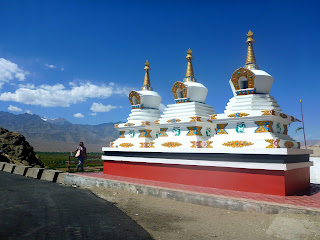



















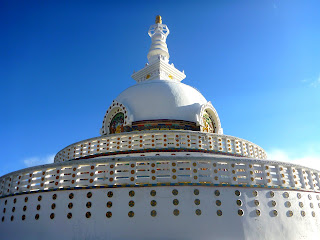






























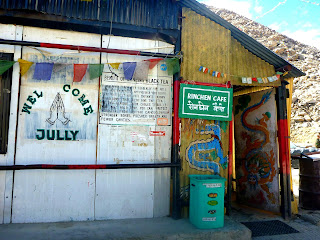


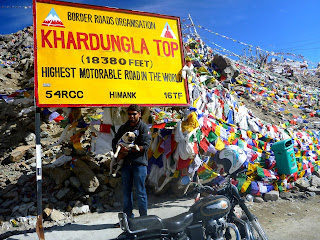


















































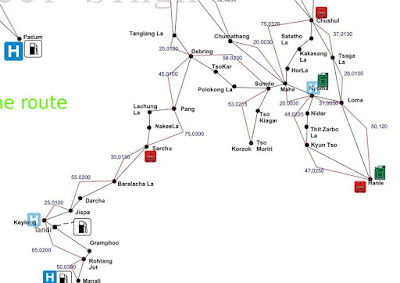





















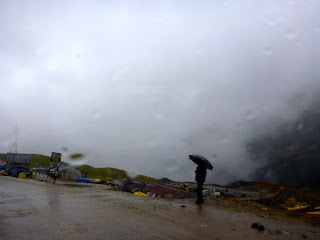










Wonderful narration.. I could picutre almost everything, including ur squabbles :) :)
ReplyDeleteWonderful narration.. I could picutre almost everything, including ur squabbles :) :)
ReplyDeleteHehe :D
ReplyDeleteI have become happy to have a look at this newsletter after searching at google, after reading I have written a chunk of the article about 1 apple nutrition facts : Thank you for the thing and supporting me.
ReplyDelete